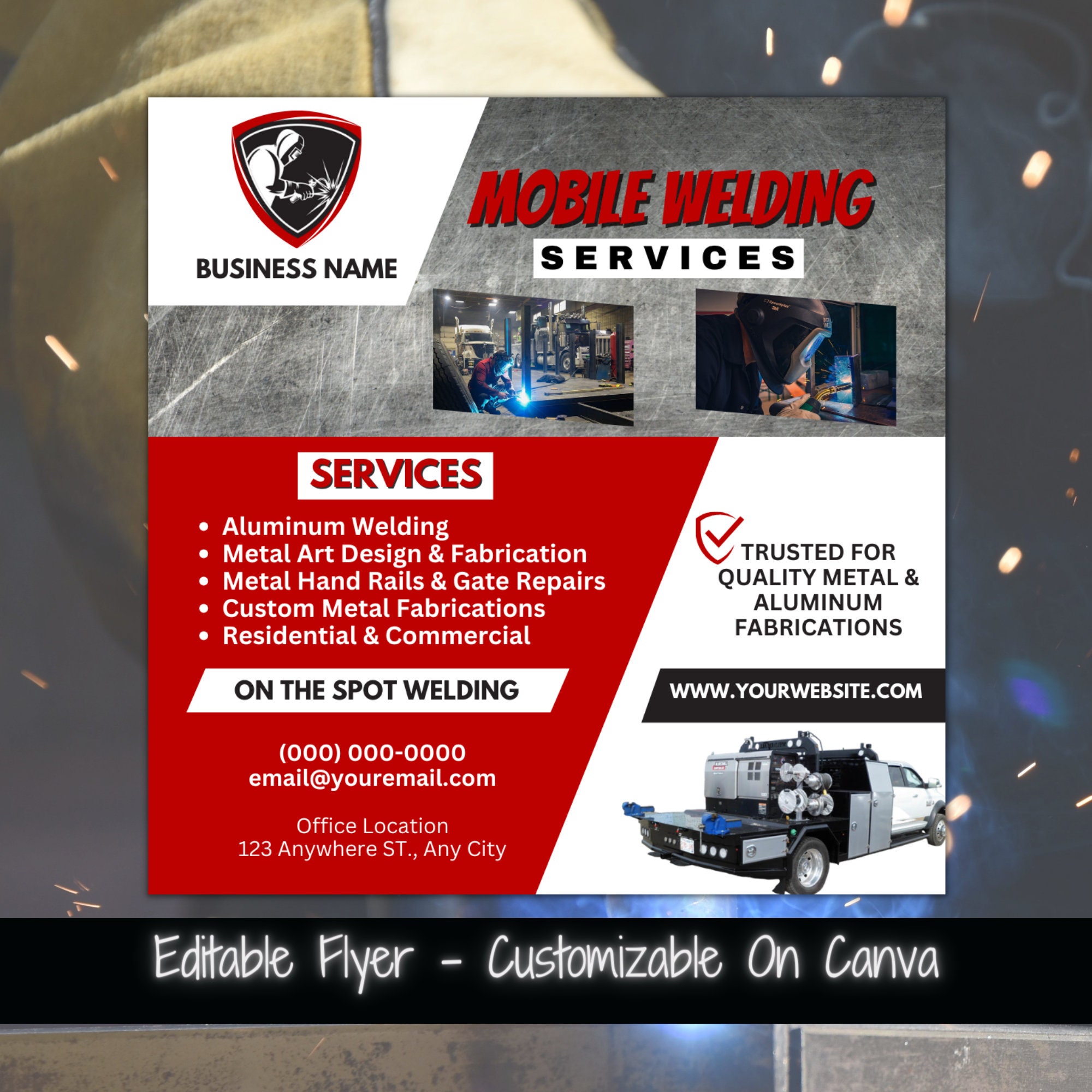Advanced Welding Inspection Service for Engineering Applications
Advanced Welding Inspection Service for Engineering Applications
Blog Article
Comprehending the Various Kinds Of Welding Techniques and Providers Available

Overview of Welding Techniques
Welding strategies include a diverse series of methods made use of to sign up with products together permanently. One usual approach is arc welding, which involves creating an electrical arc in between an electrode and the base product to thaw and fuse them together. This technique is functional and can be made use of with numerous metals, making it one of one of the most commonly made use of welding processes.

Furthermore, TIG welding, or Gas Tungsten Arc Welding (GTAW), is a precise and tidy welding method that makes use of a non-consumable tungsten electrode to produce the weld. TIG welding is typically made use of for thinner products and gives exceptional control over the welding procedure. In general, understanding these numerous welding strategies is crucial for choosing the most ideal approach for different tasks.
Generally Utilized Welding Techniques
A series of commonly utilized approaches are employed in the area of welding to successfully sign up with products with each other. One of one of the most commonly used techniques is Gas Metal Arc Welding (GMAW), also known as MIG welding. This approach makes use of a wire electrode that is fed via a welding weapon, together with a shielding gas to protect the weld from pollutants in the air. Another usual approach is Secured Steel Arc Welding (SMAW), or stick welding, which utilizes a flux-coated electrode to create the weld. Tungsten Inert Gas (TIG) welding is preferred for its precision and flexibility, utilizing a non-consumable tungsten electrode to generate the weld. Flux-Cored Arc Welding (FCAW) is frequently utilized in commercial settings as a result of its high welding rate and mobility. Additionally, Submerged Arc Welding (SAW) is ideal for creating deep welds on thick products. These commonly used welding methods accommodate different needs and materials, providing choices for various welding applications.
Advanced Welding Provider
Structure upon the structure of commonly used welding techniques, the realm of advanced welding services incorporates cutting-edge techniques useful source and innovations that push the boundaries of precision and performance in product signing up with procedures. Advanced welding services frequently include specialized techniques such as laser welding, electron beam of light welding, and friction stir welding. Friction mix welding, a solid-state joining process, makes it possible for the welding of products that are testing to fuse utilizing standard methods, like aluminum and copper.
Specialized Welding Methods

Another specialized welding method is laser light beam welding, where a very concentrated beam of light is made use of to sign up with steels with marginal heat-affected areas and distortion. These specialized welding methods display the variety and development present in the area of welding, offering remedies for a large array of industrial applications.

Selecting the Right Welding Process
Picking the ideal welding procedure is paramount in attaining ideal lead to steel fabrication and signing up with procedures. With various welding methods available, it is critical to think about elements such as the kind of metal, thickness, joint layout, and preferred end outcome when choosing the best welding process - Welding Inspection Service. Amongst the common welding approaches are Gas Steel Arc Welding (GMAW), Shielded Metal check over here Arc Welding (SMAW), Gas Tungsten Arc Welding (GTAW), and Flux-Cored Arc Welding (FCAW) GMAW, likewise called MIG welding, appropriates for welding slim to thick steels and is functional in numerous settings. On the other hand, SMAW, or stick welding, is a dependable approach for outdoor and area welding as a result of its mobility and simplicity. GTAW, or TIG welding, is optimal for welding slim materials and gives high-quality and precise welds. FCAW is chosen for welding thick materials and is known for its high welding rates. Recognizing the attributes of each welding procedure is crucial in picking one of the most appropriate technique for a particular welding project.
Conclusion
In conclusion, recognizing the numerous sorts of welding methods and solutions offered is vital for choosing the right technique for a specific job. By understanding the generally used welding techniques, progressed welding services, and specialized strategies, individuals can make educated choices to ensure the success of their welding jobs. It is essential to take into consideration aspects such as materials, job requirements, and budget plan when picking one of the most ideal welding procedure.
From conventional approaches like stick welding to advanced procedures such as laser welding, the globe of welding provides a plethora of options for joining steels with each other.Additionally, TIG welding, or Gas Tungsten Arc Welding (GTAW), is a exact and tidy welding approach that makes use of a non-consumable tungsten electrode to create the weld. Advanced welding solutions typically involve specialized approaches such as laser welding, electron light beam welding, and friction stir welding. Among the usual welding methods are Gas Metal Arc Welding (GMAW), Shielded Metal Arc Welding (SMAW), Gas Tungsten Arc Welding (GTAW), and Flux-Cored Arc Welding (FCAW) By being conscious of the generally made use of welding techniques, progressed welding services, and specialized strategies, people can make informed decisions to ensure the success of their welding jobs.
Report this page